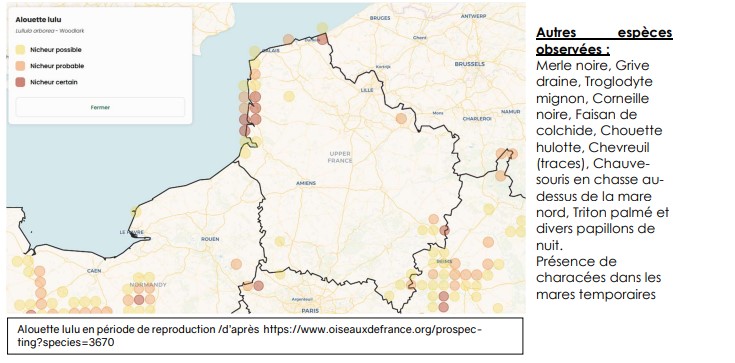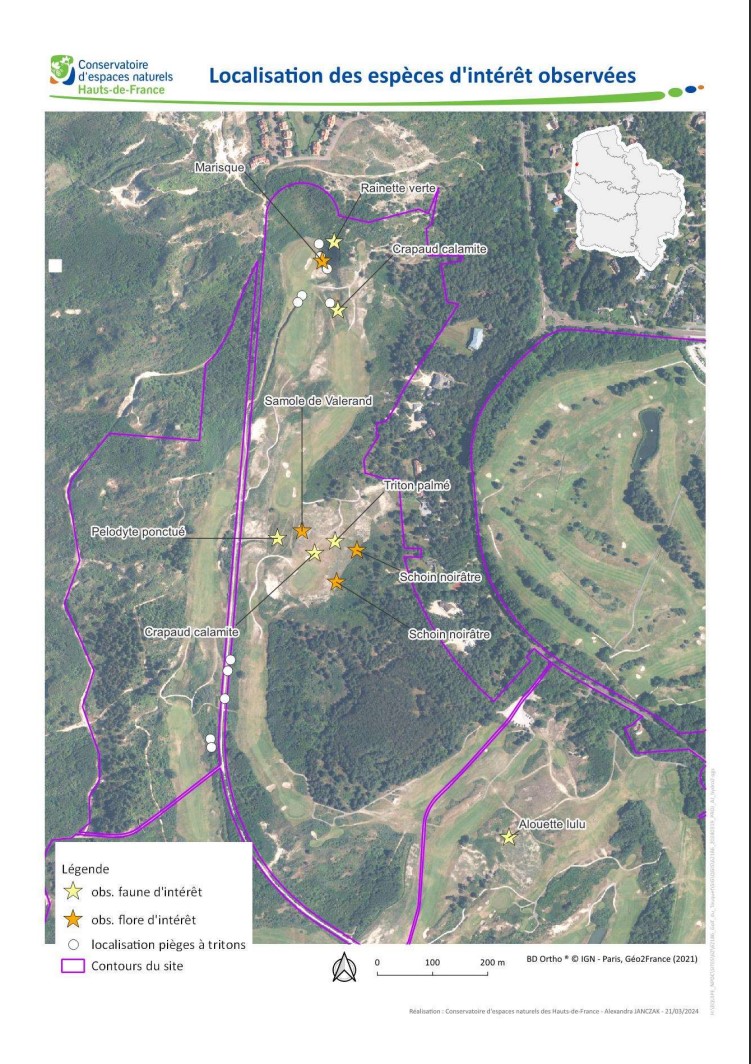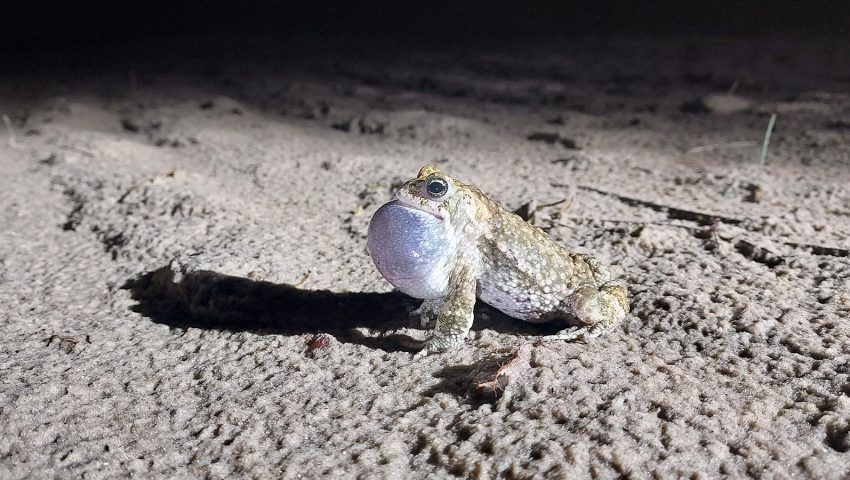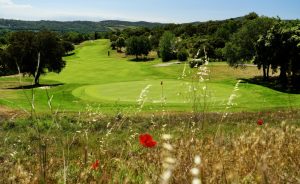Nestling in the dunes, the Golf du Touquet is home to a wealth of fauna and flora typical of these environments. These include the Natterjack toad, a discreet but very present inhabitant of the water bodies along the sea route.
The Natterjack Toad is smaller than the Common Toad and is easily distinguished from the latter by the light yellow line on its back. Hidden during the day, it is most active at night. Males have large vocal sacs, enabling them to produce a song that can be heard up to 1km away. Surprisingly, this toad is one of the few amphibians unable to jump. However, it is capable of digging small burrows in soft substrates where it hibernates in winter or rests in the cool of summer.
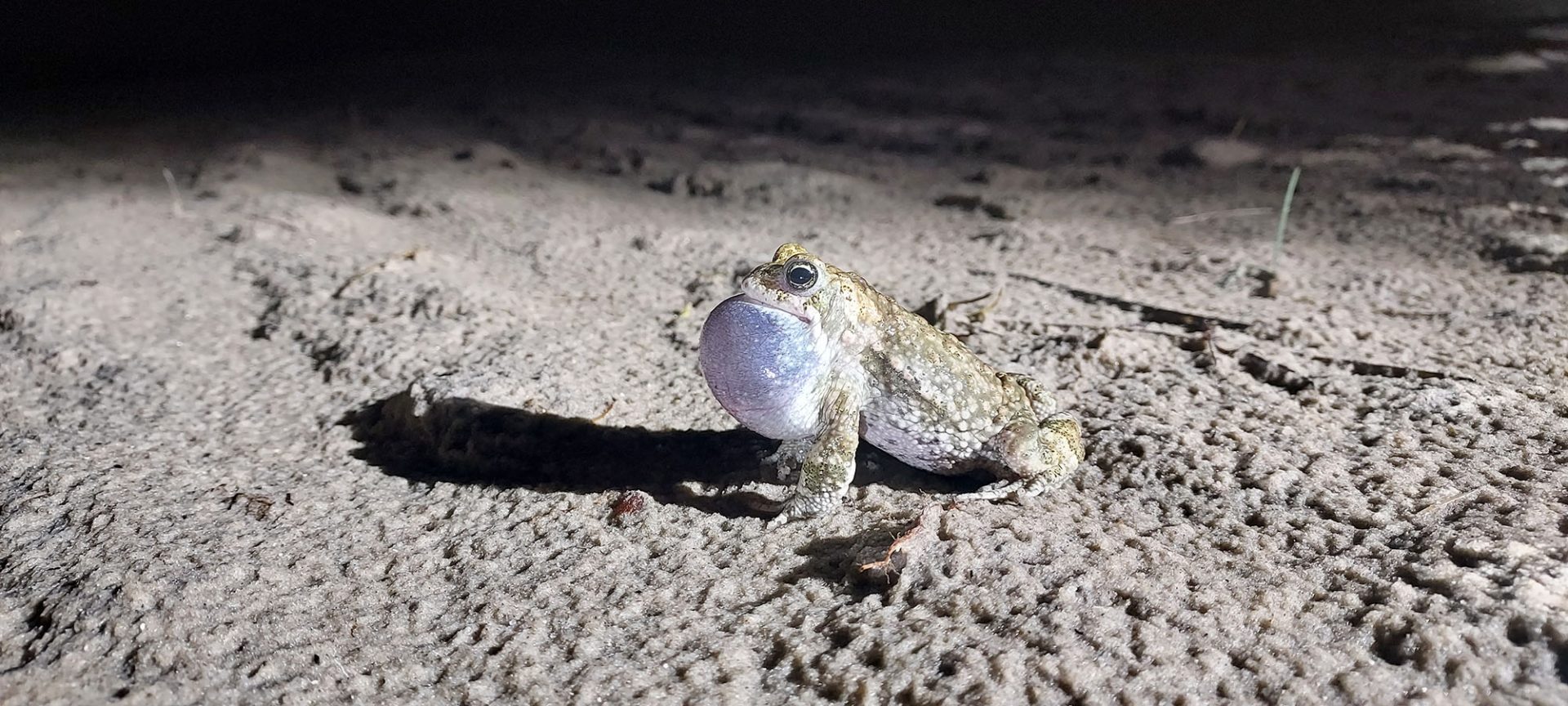
It is a pioneer species, capable of rapidly colonising newly-created habitats. It prefers regularly exposed sandy ground with little vegetation, such as the pools on the golf course and dune pools in general. The temporary nature of its breeding environment means that the Natterjack toad has access to environments that warm up quickly in the sun, which encourages the development of its tadpoles, and also an environment with few predators (fish, insects or other amphibians that predate eggs or tadpoles, etc.). On the golf course, the species was spotted in early spring, in a large population of around a hundred individuals in the northern part of the sea course.
In the Hauts-de-France region, most of the population is concentrated along the coast from Dunkirk to Mers-les-Bains. Inland Natterjack populations are mainly linked to aggregate and sand extraction quarries, but also to spoil heaps where the species has found alternative habitats.
Typical of rare, fragile and unstable environments, the Natterjack Toad is therefore a regionally threatened species. Like most amphibians in France, it is also fully protected. So if at the end of the day your ball suddenly starts to move slowly on its own, double-check that it doesn’t have four legs and a clear line down its back before you kick it.
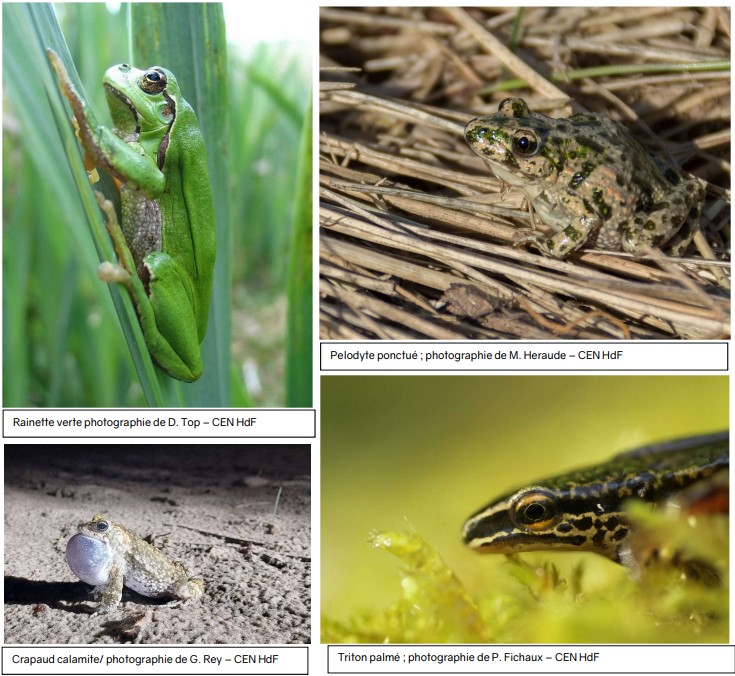
Species of interest observed at the Golf du Touquet:
– Natterjack Toad
Very large numbers of individuals in two main sectors to the north of the sea route (see map). Estimate of 100-150 individuals, which corresponds to the largest population that personally I have never seen (although I have seen many breakdowns in the sector) in 2014-2015 in search of this species).
– Spotted Pelodyte
2 singing males heard near the plantation (see map). Threatened and protected species. Found mainly on the coast and very occasionally in inland. It likes open environments. It breeds in dune slacks, wet meadows, ruts on the edge of fields, ponds, quarry bottoms, often quite deep. rich in vegetation.
– Green tree frog
A chorus of singing males was heard to the north-east of the northernmost pond. Estimated around ten individuals. In the region, mainly along the coast (from Calais to Quend-plage), there are a few populations in the Canche valley, the Flemish maritime plain and the south of the Oise and Aisne departments. It breeds in stagnant water of small to medium size and depth from 40 cm to 1 m, surrounded by structured vegetation: willows, reeds, brambles, rushes where the adults take refuge. These may be ponds on the edge of the forest, in quarries, on the banks of a river or in a lake. dunes, or in bocage settings. It has a fairly arboreal lifestyle and can spend most of its time in the forest. day perched in the vegetation.
Other species of interest observed:
– Alouette lulu. 2 singing males with courtship (see maps). Vulnerable and fairly rare in hauts de France. It frequents open woodlands with sandy or stony areas, preferably interspersed with fields.
– Various plant species: whitish corynephorus (dune species), Samole de Valerand (gently sloping banks), Marisque (reed beds), Black Schoin (dune slopes – plantations?).
